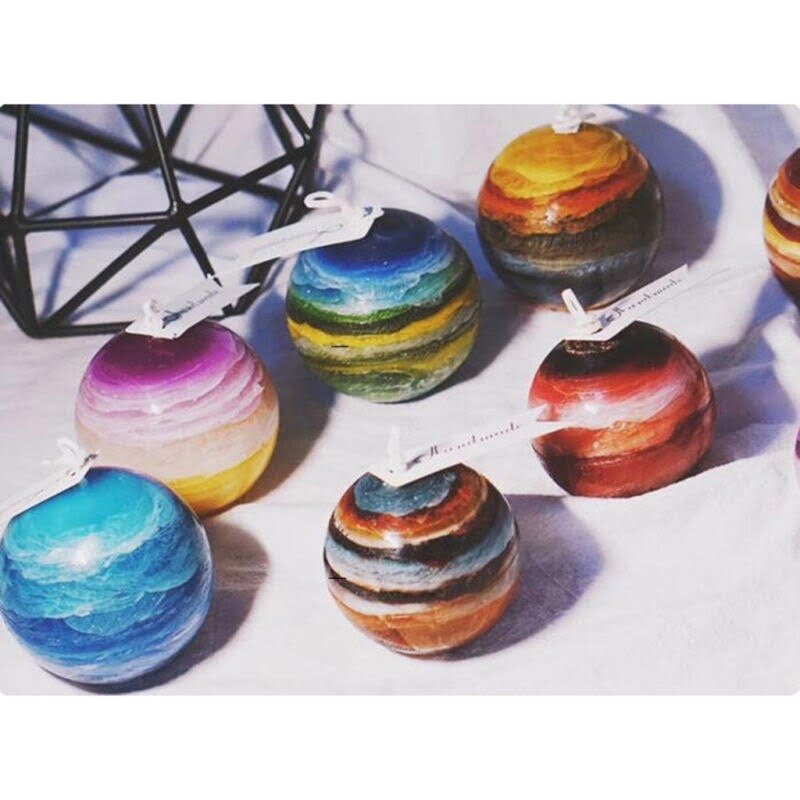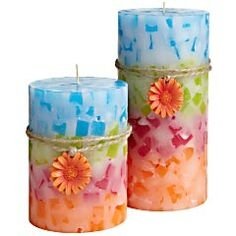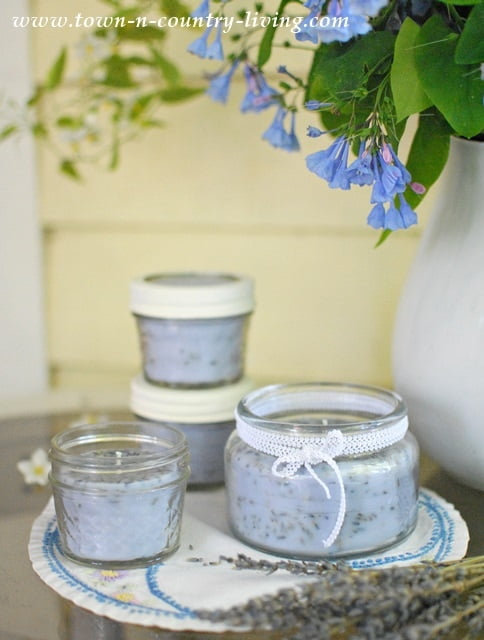Candle making has become a popular hobby and even a thriving business for many individuals in recent years. Whether for personal use or selling handmade candles, having the right supplies is crucial to create beautiful and high-quality products. In this article, we will delve into the essential list of candle making supplies that every enthusiast should have to kickstart their crafting journey.
Creating your own candles allows you to customize scents, colors, and designs, providing a unique touch to your living space or gifting options. From wax and wicks to fragrance oils and containers, each supply plays a vital role in the candle-making process. With the right materials at hand, you can unleash your creativity and craft one-of-a-kind candles that resonate with your style and preferences.
As we explore different types of wax options like soy, paraffin, and beeswax, you will understand the benefits and drawbacks of each choice. Additionally, we will discuss the significance of selecting the appropriate wicks for your candles and how wick holders contribute to successful burning. This guide aims to equip both beginners and seasoned candle makers with valuable insights into finding the perfect supplies for their projects.
Essential Supplies
Candle making is a popular and enjoyable hobby that allows individuals to express their creativity while producing beautifully scented and decorative candles. To begin this craft, it is essential to have the right supplies on hand. A well-rounded list of candle making supplies will ensure a smooth and successful candle making process, whether you are a beginner or seasoned crafter.
Wax
One of the most critical components of candle making is wax, as it serves as the base for your candles. There are several types of wax options available, including soy wax, paraffin wax, and beeswax. Soy wax is a popular choice among many crafters due to its clean-burning properties and eco-friendly nature.
Paraffin wax, on the other hand, is widely used for its affordability and ability to hold fragrance well. Beeswax is a natural option that produces long-lasting candles with a sweet honey-like scent.
Wicks
Wicks are another essential supply for candle making, as they determine how your candle burns. It is crucial to select the right wick size and type based on the diameter of your candle container or mold. Different wicks are designed for various types of candles, such as votive candles, pillar candles, or container candles. Additionally, using wick holders can help keep the wick centered while the candle cools and hardens.
Fragrance Oils
Fragrance oils play a significant role in creating aromatic candles that fill your space with delightful scents. When choosing fragrance oils for your candles, consider factors such as scent throw (how strong the fragrance is when burned) and compatibility with your chosen wax type.
Essential oils are another option for adding natural scents to your candles if you prefer plant-based alternatives. With a wide variety of fragrance oils and essential oils available in the market, you can customize your candles with unique scents tailored to your preferences.
Choosing the Right Wax
When it comes to candle making, one of the most important decisions you’ll make is choosing the right wax. There are several options available, each with its own set of benefits and drawbacks. Here’s a breakdown of some common types of wax used in candle making:
- Soy Wax: Soy wax is a popular choice among beginner and experienced candle makers alike. It is derived from soybean oil, making it a natural and renewable resource. Soy wax burns cleaner and slower than other waxes, resulting in a longer-lasting candle. Additionally, soy wax holds fragrance well, giving your candles a strong scent throw.
- Paraffin Wax: Paraffin wax is one of the oldest and most commonly used waxes in candle making. It is known for its excellent scent throw, vibrant colors, and ability to hold intricate shapes. However, paraffin wax is derived from petroleum, so it is not considered a sustainable or eco-friendly option.
- Beeswax: Beeswax is another natural option that has been used for centuries in candle making. It produces a warm honey-like aroma when burned and has natural air-purifying properties. Beeswax candles have a beautiful natural color and burn slowly and cleanly. However, beeswax can be more expensive than other waxes.
When deciding on the type of wax to use for your candles, consider factors such as burn time, scent throw, eco-friendliness, and cost. Experimenting with different types of wax can help you find the perfect fit for your candle making projects while creating unique and high-quality products.
In addition to choosing the right type of wax, it’s essential to consider the quality of the wax you purchase for your candles. Look for reputable suppliers that offer high-quality waxes without additives or impurities that can affect the performance of your candles. Investing in premium quality wax will ensure that your candles burn evenly, cleanly, and emit a beautiful fragrance throughout their life.
Wicks and Wick Holders
When it comes to candle making, one of the most crucial aspects to consider is selecting the right wicks for your candles. Wicks play a significant role in how your candle burns, determining factors such as the size of the flame, burn time, and even wax consumption.
To ensure that your candles burn efficiently and safely, it is essential to choose the appropriate wick for the type of candle you are making. Here is a list of wicks commonly used in candle making:
- Cotton Wicks: These are the most popular type of wicks and are suitable for various types of candles.
- Wooden Wicks: Known for their crackling sound when burning, wooden wicks are often used in soy or beeswax candles.
- Zinc Core Wicks: Ideal for container candles, zinc core wicks provide stability and help prevent mushrooming.
In addition to selecting the right wick, using wick holders can also greatly impact the quality of your candles. Wick holders help keep the wick centered while the candle is setting, ensuring an even burn and preventing tunneling. Here are some common types of wick holders you may want to consider including in your list of candle making supplies:
- Wick Centering Devices: These tools are placed on top of containers to keep the wick straight and centered while pouring the wax.
- Candle Wick Stickers: These adhesive stickers attach the wick to the bottom of containers, holding it in place during pouring and cooling.
- Metal Wick Sustainers: These small metal pieces crimped on the bottom end of the wick help secure it at the base of container candles.
By carefully choosing the right wicks and utilizing proper wick holders, you can create high-quality candles with consistent burns and attractive flames. Experimenting with different types of wicks and holders will allow you to find what works best for your unique candle making projects.
Fragrance Oils and Essential Oils
When it comes to creating candles, fragrance oils and essential oils play a crucial role in adding aroma to your creations. The choice of scents can set the mood and ambiance, making candle making a sensory experience.
Fragrance oils are synthetic or artificial scents specifically designed for candles, offering a wide range of options from floral and fruity to woody and exotic. On the other hand, essential oils are natural extracts derived from plants, flowers, or fruits that provide not only fragrance but also therapeutic benefits.
While fragrance oils offer an extensive selection of scents to choose from, essential oils have gained popularity for their natural and holistic properties that can enhance well-being. Essential oils like lavender for relaxation, eucalyptus for clarity, or citrus for energy can elevate the candle-making experience by not only filling the room with delightful smells but also promoting emotional and physical wellness.
When selecting fragrance or essential oils for your candles, consider factors such as strength of scent throw, compatibility with wax types, and personal preferences.
Creating custom fragrances by blending different scents is one way to add a unique touch to your candles. Experimenting with various combinations can lead to discovering signature scents that reflect your style and personality.
Whether you opt for classic fragrances like vanilla or experiment with exotic blends like sandalwood and jasmine, the right choice of fragrance oil or essential oil can transform a simple candle into a luxurious sensory indulgence. Explore the vast array of options available in the market to find scents that resonate with you and elevate your candle-making journey.
Dyes and Colorants
Types of Dyes and Colorants
When it comes to adding color to your candles, there are various options to choose from. One of the most common types of dyes used in candle making is liquid dye. Liquid dyes are easy to work with and offer a wide range of colors to choose from.
Another popular option is dye chips or blocks, which are solid chunks of colored wax that melt when added to the melted candle wax. Powdered dyes are also available and can be mixed with the wax for custom color blends.
Colorants for Unique Effects
For those looking to create unique effects in their candles, there are specialty colorants available as well. Mica powder, for example, can add shimmer and sparkle to your candles, creating a luxurious finish. Glow powders can give your candles a luminous glow in the dark effect, perfect for creating ambiance during nighttime. Additionally, you can explore UV colorants that change color under different lighting conditions, adding a fun twist to your candle creations.
Tips for Using Dyes and Colorants
When using dyes and colorants in your candle making process, it’s essential to start with small amounts and gradually increase until you achieve the desired shade. Remember that the color of the dye may appear different when mixed with hot wax compared to when the candle has fully cooled and set.
It’s also important to follow manufacturer instructions for each type of dye or colorant you use to ensure optimal results. Experimenting with different colors and combinations can help you create beautiful and unique candles that reflect your personal style or brand aesthetic.
Molds and Containers
In terms of containers, candle makers can choose from a wide range of options such as glass jars, tin containers, ceramic vessels, and even recycled materials like mason jars or teacups. Glass jars are a favorite choice for many as they allow the glow of the candle flame to be visible while adding a touch of elegance to the finished product.
Tin containers are often used for travel candles due to their portability and sturdiness. Ceramic vessels offer a more decorative option for those looking to create unique and artistic candles.
| Mold/Container Type | Description |
|---|---|
| Glass Jars | Transparent jars that show off candle colors; come in various shapes and sizes. |
| Tin Containers | Durable containers ideal for travel candles; compact and lightweight. |
| Ceramic Vessels | Elegant containers that add a decorative touch; perfect for gift candles. |
| Silicone Molds | Flexible molds that make it easy to demold candles without any damage; suitable for intricate designs. |
By selecting the right molds and containers for your candle making projects, you can elevate the visual appeal of your creations while also ensuring practicality and functionality. Whether you prefer classic glass jar candles or want to get creative with unique ceramic vessels, the options are endless when it comes to molding and shaping your homemade candles.
Tools and Equipment
Candle making requires various tools and equipment to ensure a successful and safe crafting process. One of the essential items you will need is a double boiler, which helps melt the wax gently and evenly without direct heat. This setup consists of a pot filled with water where another container holding the wax is placed, preventing it from burning or overheating. A double boiler is crucial in maintaining the right temperature for the wax while minimizing the risk of accidents.
In addition to a double boiler, a thermometer is an indispensable tool for candle making. It allows you to monitor the temperature of the melted wax accurately, ensuring that it reaches the optimal pouring temperature to create high-quality candles. Different types of wax require specific temperatures for melting and adding fragrance oils or colorants, making a thermometer essential for achieving desired results consistently.
Stirring utensils are also vital tools when working with candle making supplies. Wooden or metal stirring sticks help blend fragrances, colorants, or additives thoroughly into the melted wax. Stirring utensils ensure that all components are evenly distributed throughout the mixture, resulting in well-balanced candles with consistent color and scent profiles. Investing in quality stirring utensils will contribute to the overall quality of your homemade candles.
| Tools and Equipment | Importance |
|---|---|
| Double Boiler | Prevents wax from burning or overheating |
| Thermometer | Monitors temperature for optimal pouring results |
| Stirring Utensils | Aids in blending fragrances, colorants, and additives evenly |
Safety Precautions
In conclusion, having the necessary supplies is essential for a successful candle making venture. This article has provided a detailed list of candle making supplies, ranging from basic essentials like wax and wicks to tools and equipment like thermometers and molds. The variety of options available for each component allows for customization and creativity in crafting unique candles.
One crucial aspect that cannot be overlooked when working with these supplies is safety. It is imperative to follow safety precautions diligently while handling hot wax and other materials involved in the candle making process. Proper ventilation, protective gear, and caution around heat sources are all crucial to ensure a safe and enjoyable candle making experience.
By equipping yourself with the right supplies and following safety guidelines, you can embark on your candle making journey confidently. Whether you are a novice looking to explore a new hobby or an experienced crafter seeking to expand your skills, this comprehensive list of candle making supplies will undoubtedly set you on the path to creating beautiful, fragrant candles that bring joy and warmth to any space.
Frequently Asked Questions
What All Do You Need to Make Candles?
To make candles, you will need several key ingredients and tools. The main components include wax, fragrance oils, wicks, colorants, and containers to hold the melted wax. Additionally, you’ll need a double boiler or microwave for melting the wax, a thermometer, stirring utensils, and a workspace free of clutter.
What Equipment Do I Need to Start Making Candles?
When starting to make candles, it’s essential to have the necessary equipment on hand.
This includes a heat source for melting the wax (such as a double boiler or microwave), a thermometer to monitor the wax temperature, containers to pour the wax into, wicks and wick holders to keep them centered while the wax cools, stirring utensils like wooden sticks or chopsticks.
What Do I Need to Start a Candle Making Business?
Starting a candle making business requires more than just basic equipment. You will need to consider aspects such as sourcing high-quality materials in bulk at wholesale prices, developing unique candle designs or scents that set your business apart from competitors, establishing an online presence through websites or social media platforms for marketing purposes.
Additionally, obtaining any required permits or licenses for operating a business in your area is vital for compliance with local regulations.

Welcome to my candle making blog! In this blog, I will be sharing my tips and tricks for making candles. I will also be sharing some of my favorite recipes.





